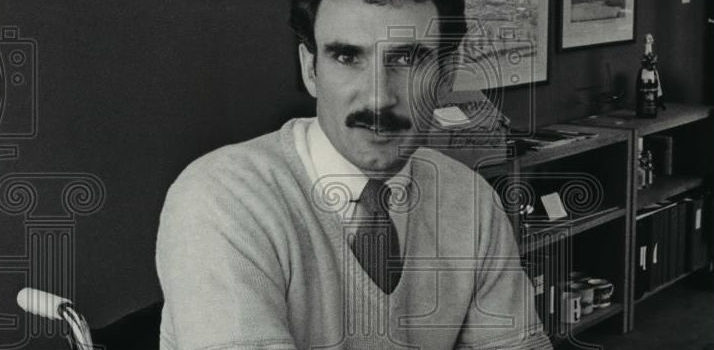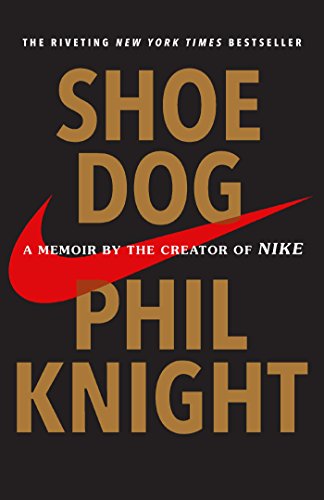

This article is an excerpt from the Shortform summary of "Shoe Dog" by Phil Knight. Shortform has the world's best summaries of books you should be reading.
Like this article? Sign up for a free trial here .
Bob Woodell was one of Phil Knight’s early hires at Nike, just a few years after starting the company. A former runner, he was paralyzed from the waist down after an accident. Phil likes that Bob therefore has a chip on his shoulder and is eager to prove himself.
Learn more about Bob Woodell and his early history at Nike.
1967
Blue Ribbon is hiring rapidly, and Bowerman has an employee candidate for Phil. Bob Woodell is famous. He was a standout runner at Oregon, but an accident left him paralyzed from the waist down and now in a wheelchair. Phil meets with him and they’re mutually smitten. Phil offers him a job opening Blue Ribbon’s second retail store in Eugene, Oregon.
1969
Once again, sales are poised to double for Blue Ribbon, at $300,000 this year. Phil feels it’s finally safe to pay himself a salary ($18,000 a year), and he quits Portland State to go full time at Blue Ribbon.
Blue Ribbon finds a new office in Tigard. Bob Woodell, the former runner in a wheelchair, is promoted to operations manager at Blue Ribbon. Despite his injury, he’s ecstatic at Blue Ribbon – the mission fills his spirits and he always gets the job done.
1970
As always, the bank has problems with Blue Ribbon’s perennially low cash reserves. Bigger sales has meant bigger loans, which would be harder to pay off and higher risk if the company collapsed. As always, Phil is frustrated that the banks don’t see the bigger picture – a company doubling every year!
With $600,000 in sales this year, Phil asks for a $1.2 million loan. This sounds crazy to the bank. Stretched to the limit, they give him an unsavory ultimatum – his credit line is now maxed. Blue Ribbon can have no more money until they put more cash in their account. They’re also now imposing sales quotas – miss one deadline and they’ll break the relationship.
So money’s now a problem. First, they need $20k for a shipment from Onitsuka. They don’t have it. Blue Ribbon tries a public offering, hoping to get some interest from investors by selling 30% at 300k. Almost no one bites – they raise just $300.
He eventually scrapes together the $20k from receivables, but they need more cash to operate. He has to do what he vowed never to do – ask everyone he knows for money: former teammates, family, friends. Bob Woodell’s family comes to the rescue. They’re not well off, but they give him their entire life savings – $8,000.
1973
Phil strongly requests two employees, Bob Woodell and Johnson, to trade roles and locations, transferring between Boston and Oregon. Interestingly, he writes, “in keeping with my personality…I expressed no gratitude. I spoke not a word of thanks or praise.”
1976
There are countless more difficulties to resolve – a larger warehouse on the East Coast, a larger scale advertising agency, new endorsements for more sports. But Phil gets through it with his ragtag team of Bob Woodell, Johnson, Strasser, and Hayes. They call each other and the team Buttface. The joke is, in how many successful companies can you yell, “Hey, buttface,” and the team turns around?
Why does he love his team so? They’re clearly effective at their work, but they’re also cut from the same cloth. They came from Oregon, and they all had their personal chips on their shoulders to validate themselves to the world (Bob Woodell lost his athletic dreams in an accident and was now confined to a wheelchair; Hayes couldn’t become partner at his accounting firm because he was too fat; Phil was cut from the baseball team and had his heart broken). They had thick skin, and they took each other down a notch. It was them against the world.
1978
Sales double again – on track for $140 million in 1979. Nike keeps growing. They change headquarters to a 40,000 square foot building in Beaverton, where his office is bigger than their entire first headquarters. They have factories in Taiwan, Korea, England, and Ireland. Industry analysts say that Nike is unstoppable.
Nike launches an apparel business, since this is where Adidas gets most of their sales, and it’s a way to offer more attractive endorsement deals to athletes. Phil starts by appointing a totally unstylish accountant who produces unfashionable, abhorrent clothing. (Phil justifies the appointment of so many accountants and lawyers with the idea that by qualifying for their trade, most were guaranteed to be somewhat competent). But this apparel designer with no fashion sense won’t do. Phil replaces this person with Bob Woodell, who launches a great first clothing line.
———End of Preview———

Like what you just read? Read the rest of the world's best summary of "Shoe Dog" at Shortform . Learn the book's critical concepts in 20 minutes or less .
Here's what you'll find in our full Shoe Dog summary :
- How Phil Knight started Nike when he was just 24 years old
- The lawsuit that almost ended Nike
- The ups and downs of Nike over 20 years of business






